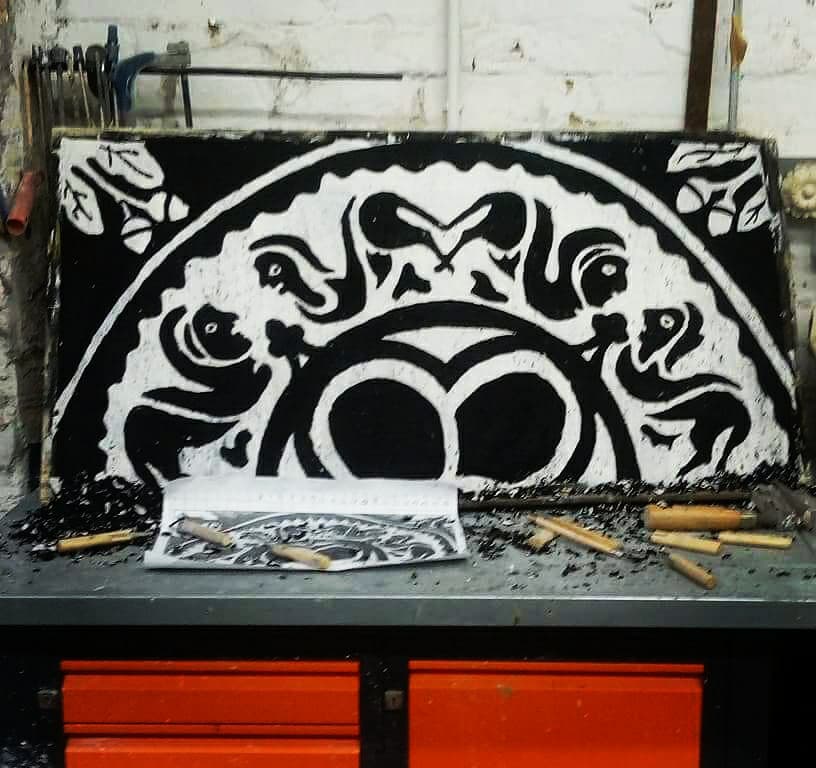Handmade, Art, Sgraffito (ENG, PL)
ENG
hey, I would like to introduce you to the my project, as well as the performance of this noble work
and bring you a bit of this method :>
Sgraffito is a decorative technique for wall painting.
Sgraffito consisted of applying successive colorful layers of plaster and scraping
fragments of top layers at a time when they have not dried yet
(they did not harden). By revealing the layers previously applied, a two- or multi-colored pattern is created.
The sgraffito technique was known in antiquity, and especially popular during the Renaissance when decorating
facades of Italian architecture. Sgraffito is also used today; durability of all solutions
Unfortunately, sgraffitowych is constantly losing, due to the increase in the amount of carbon in the atmosphere, which together with rainwater
they form carbonic acid particles. It destroys the surface of plasters, and thus sgraffito; it counteracts this
using additional protective layers - silicate or wax.
..........................................................................................................................................

..........................................................................................................................................
PL
hej, chciałbym wam przedstawić mój projekt, a także wykonanie tego zacnego dzieła
i przybliżyć wam trochę tą metodę :>
Sgraffito to technika dekoracyjna malarstwa ściennego
Sgraffito polegała na nakładaniu kolejnych, kolorowych warstw tynku i na zeskrobywaniu
fragmentów warstw wierzchnich w czasie, kiedy jeszcze one nie zaschły
(nie utwardziły się). Poprzez odsłanianie warstw wcześniej nałożonych powstaje dwu- lub wielobarwny wzór.
Technika sgraffito znana była w starożytności, a szczególnie popularna w okresie renesansu przy dekorowaniu
fasad obiektów włoskiej architektury. Sgraffito bywa też stosowane współcześnie; trwałość wszelkich rozwiązań
sgraffitowych niestety stale się obniża, z powodu wzrostu ilości związków węgla w atmosferze, które wraz z wodą opadową
tworzą cząstki kwasu węglowego. Niszczy on powierzchnię tynków, a tym samym sgraffito; przeciwdziała się temu
stosując dodatkowe warstwy ochronne – krzemianowe lub woskowe.
..........................................................................................................................................

..........................................................................................................................................